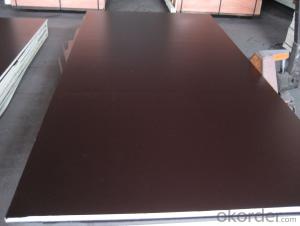When it comes to woodworking, the choice of material can make all the difference in the world. One such material that has been gaining popularity among woodworkers and DIY enthusiasts is 3/8 plywood. With its unique properties and versatility, it offers a thinner option for specific uses that can be both functional and aesthetically pleasing. In this article, we will explore the world of 3/8 plywood, its benefits, applications, and how to work with it effectively.
Why Choose 3/8 Plywood?
3/8 plywood, also known as 10mm plywood, is a type of engineered wood product that is made from thin layers of wood veneer that are glued together under heat and pressure. The reason for choosing 3/8 plywood over other options can be attributed to several factors:
– Weight: It is lighter than traditional plywood, making it easier to handle and transport.
– Cost: It is more affordable, which is a significant advantage for those on a budget.
– Strength: Despite its thinness, it maintains a good level of strength and durability.
– Aesthetics: The thin layers of veneer can create a unique visual effect, adding character to your projects.
Applications of 3/8 Plywood
The uses of 3/8 plywood are vast and varied. Here are some of the common applications where it shines:
– Furniture Making: It’s perfect for creating lightweight yet sturdy furniture pieces.
– Cabinetry: Use it for the construction of cabinets, both for functionality and style.
– Art Projects: The thin veneer layers can be used for various art projects, including marquetry and intarsia.
– Model Making: Ideal for creating scale models due to its lightweight and ease of cutting.
– Sound Insulation: It can be used as a sound barrier in certain applications.
– Decorative Panels: The thin veneer layers can be stained or painted to create decorative panels for walls or ceilings.
Working with 3/8 Plywood
Working with 3/8 plywood requires a different approach compared to thicker plywood or solid wood. Here are some tips to help you get the most out of your 3/8 plywood projects:
– Cutting: Use sharp tools and a steady hand to ensure clean cuts. A fine-tooth blade is recommended for cutting plywood.
– Sanding: The thin veneer layers can be easily damaged, so be gentle when sanding. Start with a lower grit and work your way up.
– Joining: When joining pieces of 3/8 plywood, consider using wood glue for a strong bond or biscuits for alignment.
– Finishing: Apply finishes carefully to avoid soaking the thin veneer layers, which can lead to warping or delamination.
The Emotional Connection to 3/8 Plywood
For many woodworkers, the choice of material goes beyond just functionality. There’s an emotional connection to the material, a sense of satisfaction in working with something that is both beautiful and practical. 3/8 plywood, with its unique characteristics, can evoke a sense of creativity and inspire projects that are not only useful but also a source of pride and joy.
The Future of 3/8 Plywood
As the world becomes more environmentally conscious, the demand for sustainable materials is on the rise. 3/8 plywood, being an engineered wood product, is a step towards more sustainable options in woodworking. Its versatility and lighter weight make it an attractive choice for future projects, both for professional woodworkers and hobbyists alike.
Conclusion
3/8 plywood is more than just a material; it’s a canvas for creativity, a solution for practical needs, and a step towards a more sustainable future in woodworking. Whether you’re a professional or a beginner, exploring the possibilities of 3/8 plywood can open up a world of opportunities for your next project.

